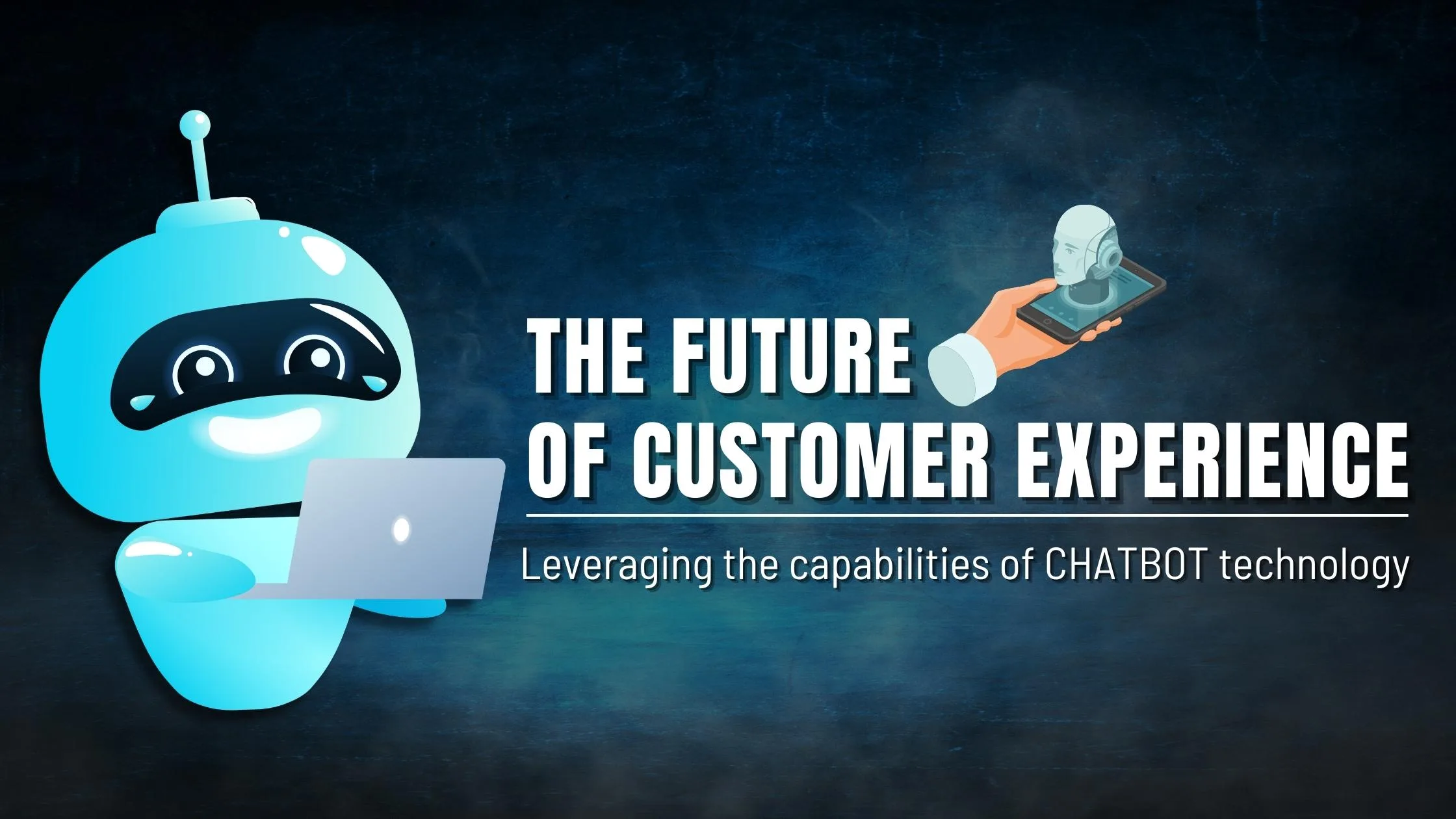The future of customer experience: Leveraging the capabilities of chatbot technology
Welcome to the future of customer experience! In a world driven by technology and innovation, businesses are constantly seeking ways to enhance their interactions with customers. And guess what? Chatbot technology is here to revolutionize the way we engage with our clients. Imagine having a virtual assistant available 24/7, ready to answer inquiries, provide personalized recommendations, and even handle transactions seamlessly.
Sounds too good to be true? Well, get ready to dive into this exciting blog post as we explore the incredible capabilities of chatbots and how they will shape the future of customer experience. Brace yourself for an enlightening journey that will change your perception of AI-powered assistants forever!
Introduction to chatbot technology
In the customer service industry, chatbot technology is becoming increasingly popular as a way to provide customers with faster, more efficient service. By automating repetitive tasks and providing instant answers to common questions, chatbots can free up customer service representatives to handle more complex issues. In addition, chatbots can help businesses to collect data and feedback from customers in real-time.
When used effectively, chatbot technology has the potential to transform the customer experience by making it more convenient, efficient and personalized. Here are some ways that chatbots can be used to improve the customer experience:
1. Increased convenience: Chatbots are available 24/7 and can provide assistance instantly, meaning that customers don’t have to wait for a human representative to become available.
2. Greater efficiency: By automating tasks such as answering common questions and providing standard information, chatbots can drastically reduce the amount of time required to resolve an issue.
3. Improved personalization: Chatbots can collect data about individual customers (such as preferences and purchase history) and use this information to provide a more personalized experience.
4. Increased satisfaction: In many cases, chatbots are able to resolve issues faster than human customer service representatives. This can lead to increased satisfaction among customers who receive timely assistance with their inquiries.
Benefits of integrating chatbots in customer engagement
As the world becomes more and more digitized, customers are increasingly expecting businesses to offer a seamless, personalized experience across all channels. Chatbots can play a key role in providing this type of experience, by engaging with customers in real-time and providing them with the information they need, when they need it. Here are some of the benefits of integrating chatbots into your customer engagement strategy:
1. Increased Customer Satisfaction: Chatbots can help resolve customer queries quickly and efficiently, leading to increased satisfaction levels.
2. Reduce Costs: Automating customer support through chatbots can help reduce operational costs.
3. Improved Customer Retention: By providing a positive customer experience, chatbots can help improve customer retention rates.
4. Generate New Leads: Chatbots can also be used to generate new leads by engaging with potential customers who may not have otherwise had contact with your brand.
5. Increase Sales: By upselling and cross-selling products and services, chatbots can help increase sales revenues.
Chatbot use cases in customer experience
There are many ways that chatbot technology can be used to improve customer experience. Here are a few examples:
1. Chatbots can be used to provide 24/7 customer support. This means that customers can get help whenever they need it, even outside of normal business hours.
2. Chatbots can be used to handle simple tasks such as taking a customer’s order or providing information about a product or service. This frees up customer service representatives to handle more complex issues.
3. Chatbots can be used to proactively reach out to customers to offer help or answer questions. This helps to create a more personal relationship between the customer and the company.
4. Chatbots can be used to collect feedback from customers. This feedback can be used to improve the products and services that a company offers.
5. Chatbots can be used to upsell and cross-sell products and services. For example, a chatbot could suggest additional products or services that a customer might be interested in based on their previous interactions with the company .
Challenges and best practices for leveraging chatbot technology in customer experience
As the use of chatbot technology in customer experience becomes more prevalent, it is important to consider the challenges and best practices for leveraging this technology. One challenge is that chatbots can often struggle to understand natural language, which can lead to frustration for customers. To overcome this, it is important to design chatbots with a clear purpose and use simple language. Additionally, chatbots should be designed to hand off to a human agent when needed.
Another challenge is that chatbots need to be constantly updated as new customer inquiries come in. This can be a time-consuming and resource-intensive process. To overcome this, it is important to have a team dedicated to maintaining the chatbot. Additionally, it is important to use data from customer interactions to improve the chatbot over time.
It is important to consider the ethical implications of chatbot technology. For example, chatbots may collect sensitive information from customers that could be used for marketing purposes or sold to third parties. To address these concerns, it is important to have a clear privacy policy in place that explains how customer data will be used. Additionally, chatbots should be designed with transparency in mind so that customers are aware they are interacting with a bot.
Examples of successful chatbot deployments
There are many examples of successful chatbot deployments that have led to improved customer experiences. One such example is a chatbot deployed by a leading online retailer that allows customers to ask questions and receive recommendations about products they may be interested in. This chatbot was able to provide answers to common customer questions with speed and accuracy, and also made personalized recommendations based on the customer’s individual needs.
Another example of a successful chatbot implementation comes from the healthcare industry. A major hospital chain deployed a chatbot to help patients schedule appointments and get answers to their medical questions. This chatbot was able to free up time for nurses and doctors, who were previously spending time on the phone scheduling appointments and answering patient questions. The chatbot was also able to provide 24/7 access to information for patients, which resulted in a better overall experience for them.
These are just two examples of how businesses are using chatbots to improve the customer experience. As chatbot technology continues to evolve, we can expect even more innovative applications that will further improve the way businesses interact with their customers.
Tips on how to get started with chatbot technology
If you’re looking to get started with chatbot technology, there are a few things you should keep in mind. First, it’s important to understand the basics of how chatbots work. Chatbots are essentially computer programs that simulate human conversation. They can be used to automate customer service or sales tasks, or even just to have a little fun.
Once you understand the basics, it’s time to start thinking about how you can use chatbots to improve your customer experience. Here are a few tips:
1. Use chatbots to automate simple tasks like customer service inquiries or appointment scheduling. This can free up your staff to focus on more complex tasks, and it can help improve your customers’ experience by getting them the information they need more quickly.
2. Use chatbots to engage with your customers on a personal level. Customers appreciate when businesses take the time to connect with them on a personal level, and chatbots can help you do just that.
3. Use chatbots to collect feedback from your customers. Feedback is essential for businesses looking to improve their customer experience, and chatbots can help you gather it quickly and easily.
4. Use chatbots to stay ahead of the competition. Chatbot technology is still relatively new, which means there’s a good chance your competitors are not using it yet. That gives you a chance to get ahead by offering a unique and improved customer experience that they can’t match.
Keep these tips in mind and you should be well on your way to getting started with chatbot technology.
Conclusion
The future of customer experience is bright, and chatbot technology will only help to make it better. By leveraging the capabilities of this powerful tool, companies can create more efficient customer service experiences that are tailored to their customers’ needs. This not only helps to increase customer satisfaction but also saves time and money for businesses in the long run. Companies should be aware of how chatbots can benefit them and consider investing in them as part of a larger strategy for improving their customer experience.





